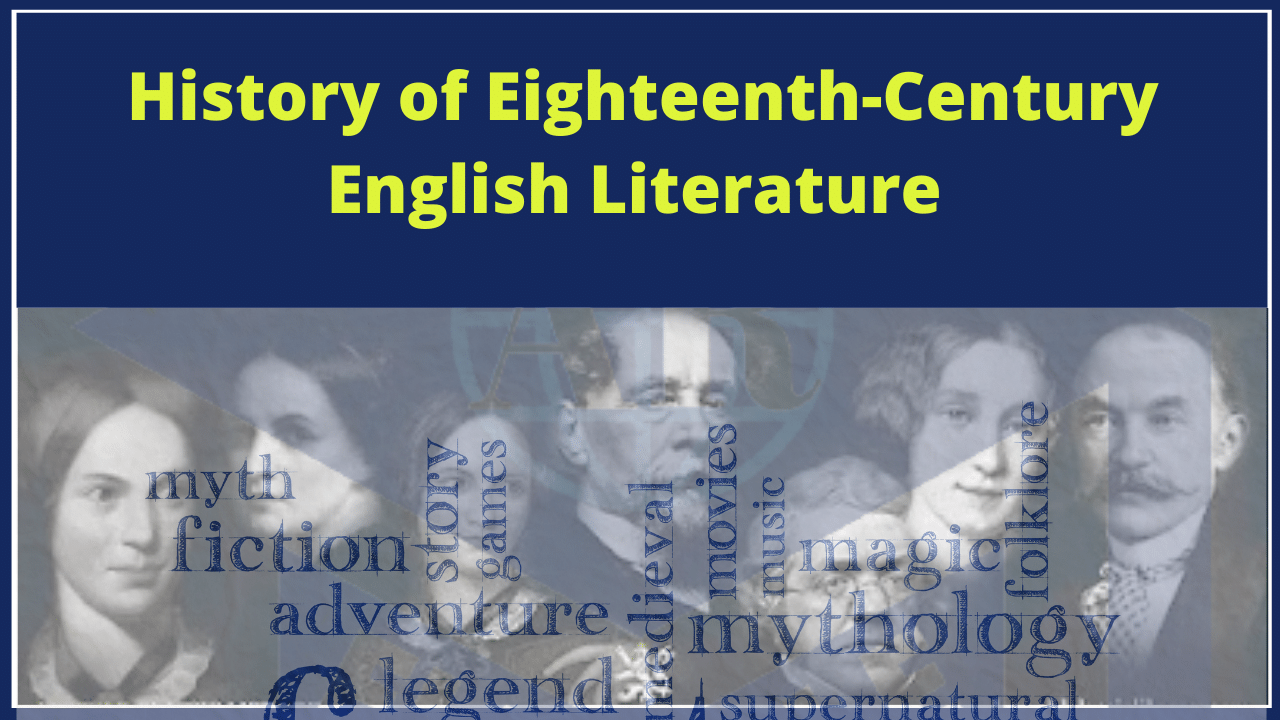Eighteenth-Century Literature
Alexander Pope
He used mock-heroic poems as a means of satire to attack social foolishness. He said that the proper study of mankind is the man. His health was bad. He thought of life as a long illness. He also translated the Iliad and the Odyssey of Homer.
His Important Works
Essay on Criticism: In this book, Pope suggests that the writer should follow the classic rules of Homer and Virgil. He says that to copy Homer is to copy nature.
Essay on Man: This poem claims that the proper study of mankind is the man. He claims that poets should study man and his society.
The Rape of the Locke: This mock-epic poem satirizes the fashions, norms, laziness, and double standards of the ladies of 18th century England. Belinda is a fashionable girl. Lord Petre cuts her hair in a theatre sitting behind her. The quarrel begins from home to the whole of London.
The Dunciad: This mock-heroic poem attacks the dull writers of his times who wrote to earn their bread.
William Blake
He is also one of the Romantic poets. His poems have hidden meanings that are hard to understand. He did not believe in the reality of matter, or in the power of earthly rulers, or in the punishment after death. His best knows poems are included in ‘Songs of Innocence’ and ‘Songs of Experience. The poems in ‘Songs of Innocence’ are simple, lyrical and easy to understand. The poems included in ‘Songs of Experience’ are difficult, paradoxical and symbolic.
Also Read
Churchyard Poets/Graveyard Poets
The poets of the late 18th century who chose death for their subject are grouped as Graveyard poets. These poets are Edward Young, Robert Blair and Thomas Gray.
Thomas Gray
His ‘Elegy Written in a Country Graveyard’ is one of the most beautiful and famous poems. It describes his thoughts as he looks at the graves of country people buried near the church at Stoke Pages. He wonders what they might have done in the world if they had better opportunities. His ode ‘The Bard’ is a sad song that curses King Edward I, who had put all the Welsh poets to death.
Edward Young
His ‘Night Thoughts’ is about life, death, the future world and God. It is written in blank verse.
Robert Blair
He also wrote his poems in blank verse. In his poem, ‘The Grave’, he begs the dead to come back and tell something about the grave.
Daniel Defoe
He began his career as a writer by writing pamphlets, essays and poems and later wrote his most famous novel ‘Robinson Crusoe’. The story of this novel is based on real events but the characters are fictional. The main character Robinson Crusoe is left alone on an uninhabited island after a shipwreck. He spends almost 28 years on that island rearing goats, birds and doing domestic activities. Another novel ‘Moll Flanders’ is about a beautiful girl whose thirst for money corrupts her. She ultimately becomes a prostitute.
Jonathan Swift
He was a bitter satirist. He attacked discrimination and the evils of society. His ‘Tale of a Tub’ attacked religious ideas. In ‘A Modest Proposal’ he suggests that the poor, who need money should sell their children to the rich as food. This is a severe attack on the wealthy people and government of England that was responsible for poverty in Ireland. Another of his famous satire is ‘Gulliver’s Travels’
Samuel Richardson
His novels examine human hearts and show the human’s character, attitude, feelings and emotions. His novel ‘Pamela’ is about a girl named Pamela who is the maid of Squire B’s mother. Squire B tries to seduce her. He treats her badly. But Pamela resists him. Due to her virtue, his lust changes to love. He offers her a marriage. Another novel ‘Clarrisa’ is about a beautiful and talented girl Clarrisa. She is forced by her family to marry Solmes because every family member would get something in return from Solmes. In revenge, she later marries a rake who sells her to a brothel.
Richard Steele and Joseph Addison
These two worked together in producing ‘The Tatler, a paper of essays on various subjects. A more famous paper ‘The Spectator’ followed. They were educators. They were mild satirists. They exposed the evils and follies of society. The visible feature of the 18th century was the appearance of coffee houses. The coffee houses became the place for the exchange of news and ideas. These two newspapers were born in coffee houses.
The Novel of Terror/Gothic Novels
The novels of terror of gothic novels are about ghosts, witches, supernatural elements and dead persons. The plots are mysterious and frightening. They show impossible events. The writers include:
Horace Walpole
His ‘The Castle of Otranto’ is a novel about the 12th and 13th centuries. It is about a ghost that lives in an old building and haunts beautiful ladies.
William Beckford
His ‘Vatek’ is about a man Vatek who visits hell and is punished for his crimes.
Ann Radcliffe
Her greatest novel ‘The Mysteries of Udolpho’ is set in the mountains. It describes the life of a girl Emily who is held by her aunt’s husband in a dark castle.
[Similarly, Mary Shelley’s novel ‘Frankenstein’ is also a gothic novel]
